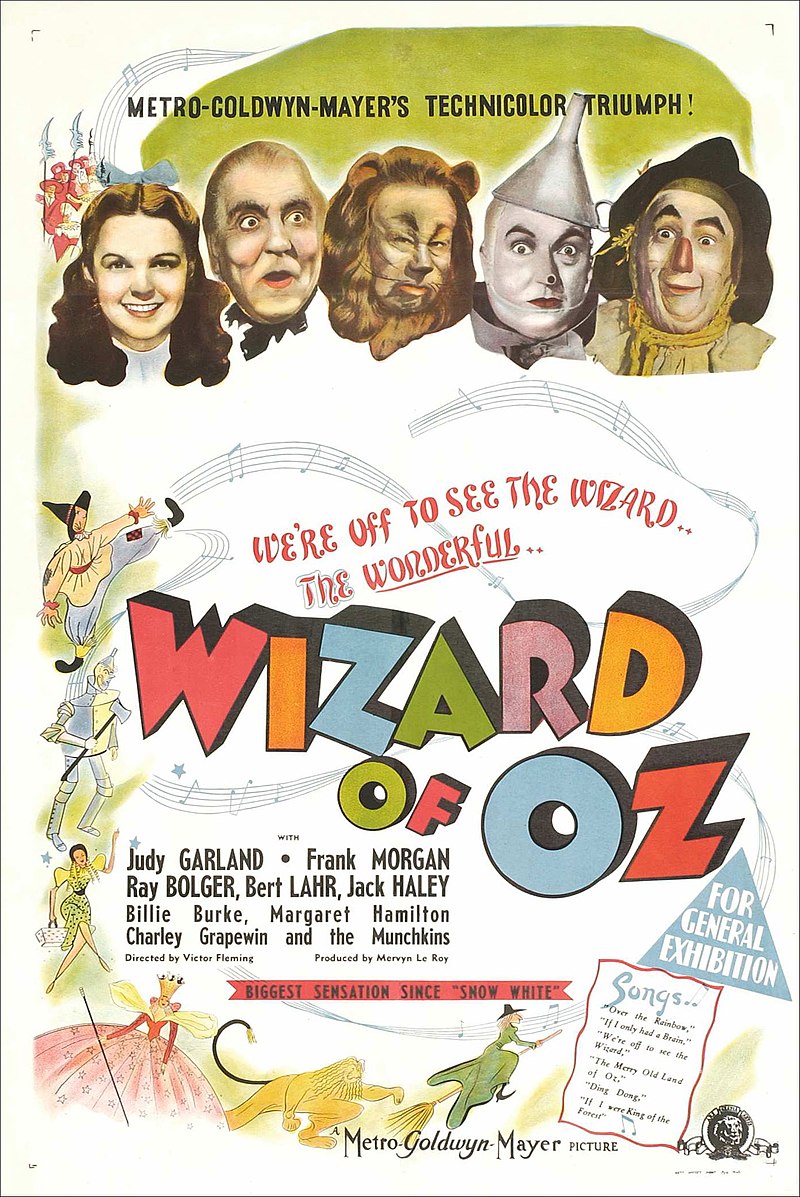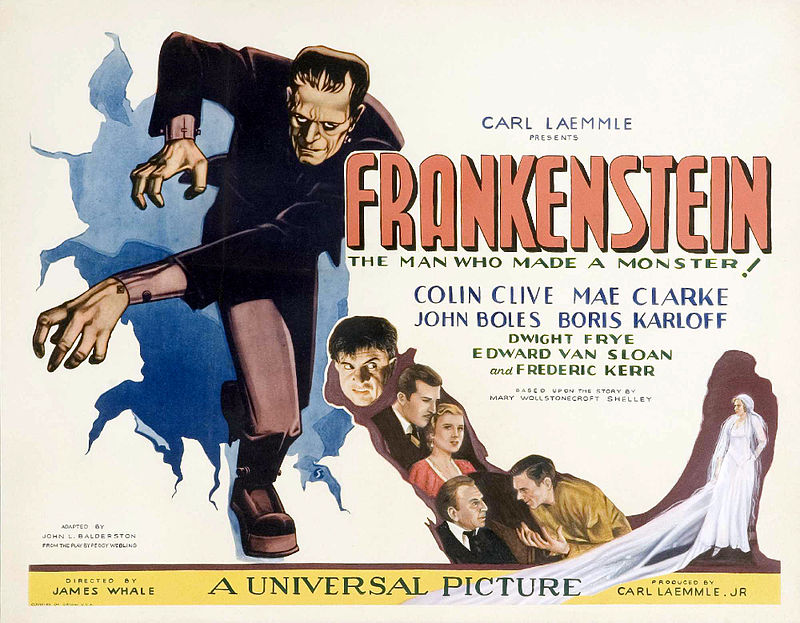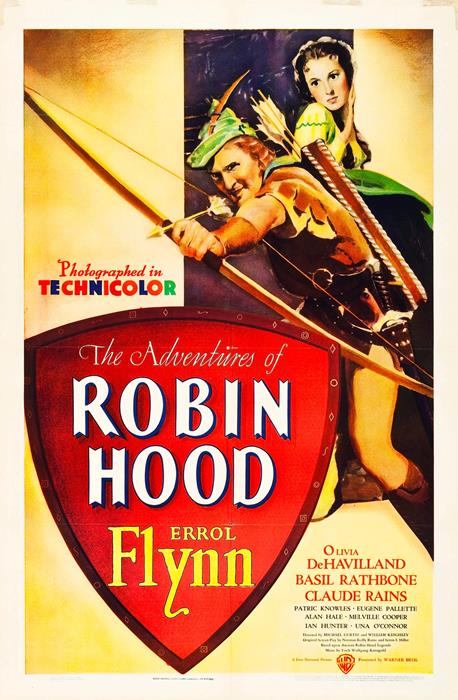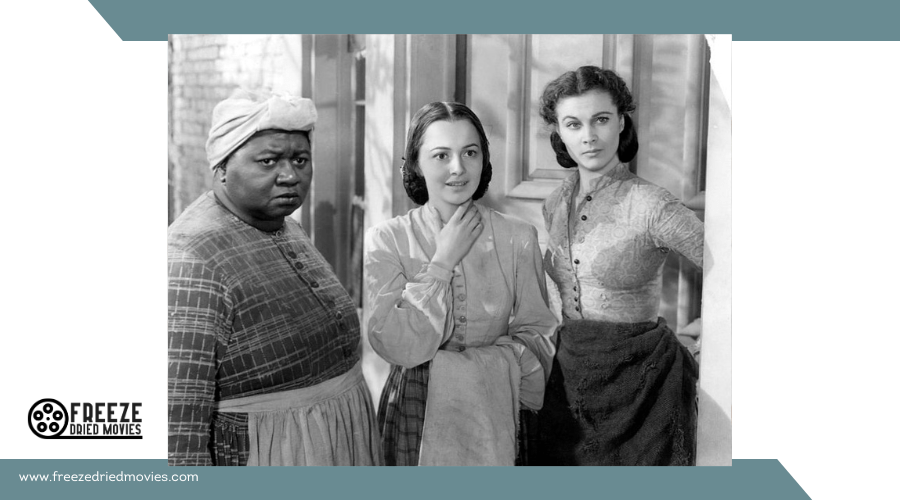The Top 10 Most Successful Movies of the 1930s

When discussing the most successful movies of the 1930s, "Gone With the Wind" is a cornerstone, leaving a lasting impact on cinema history. Equally significant, "Snow White and the Seven Dwarfs" revolutionized animation, while "The Wizard of Oz" captivated audiences with its iconic characters and innovative use of Technicolor. Each film on this list contributed uniquely, whether through groundbreaking special effects, memorable performances, or enduring cultural influence. Curious about which other films made the cut? Let's explore further.
Gone With the Wind
Released in 1939, *Gone with the Wind* remains a monumental film in cinematic history. Adjusted for inflation, it stands as the highest-grossing film of all time, with domestic earnings surpassing $198.7 million. This achievement is extraordinary, especially given the competition and economic conditions of the period.
The movie's success extended beyond the box office. It won 10 out of 13 Academy Award nominations, including Best Picture, Best Director for Victor Fleming, and Best Actress for Vivien Leigh. These accolades underscore the film's quality and the talent involved in its creation.
Set during the American Civil War and Reconstruction period, *Gone with the Wind* captivates with its epic storytelling and complex characters. The production was notable for its use of Technicolor and grand set designs, including the iconic Tara plantation. The film's cultural impact endures, influencing countless adaptations and sparking ongoing scholarly discussions about its portrayal of historical events and social issues. Its box office success is just one aspect of its lasting legacy.
Snow White and the Seven Dwarfs

*Snow White and the Seven Dwarfs*, released in 1937, revolutionized cinema as the first full-length animated feature film. Prior to this, animated storytelling was confined to short films. Walt Disney Productions broke new ground with *Snow White and the Seven Dwarfs*, forever altering the landscape of animation. Its release was met with phenomenal success, grossing over $8 million at the box office and becoming one of the highest-grossing films of the 1930s.
The film not only won hearts but also accolades. In 1939, it received an honorary Academy Award, recognizing its groundbreaking achievement in animation. With iconic characters such as Snow White, the Seven Dwarfs, and the Evil Queen, and memorable songs like "Someday My Prince Will Come," the movie left an indelible mark on popular culture.
Key Highlights:
| Aspect | Detail |
|---|---|
| Release Year | 1937 |
| Box Office Gross | Over $8 million |
| Academy Award | Honorary Award (1939) |
| Iconic Characters | Snow White, Seven Dwarfs, Queen |
| Memorable Song | "Someday My Prince Will Come" |
Disney's pioneering effort laid the foundation for the animation industry, influencing countless films that followed.
The Wizard of Oz

Few films capture the imagination quite like *The Wizard of Oz*, released in 1939. This iconic fantasy musical grossed over $3 million at the box office and remains one of the highest-grossing films when adjusted for inflation. The groundbreaking use of Technicolor, particularly the transition from sepia-toned Kansas to the vibrant Land of Oz, set new standards in filmmaking and captivated audiences.
Judy Garland's portrayal of Dorothy Gale is unforgettable, and the film's songs, especially "Over the Rainbow," have cemented its place in cultural history. Directed by Victor Fleming, *The Wizard of Oz* received six Academy Award nominations and won two, including Best Original Song for "Over the Rainbow." These accolades highlight the film's exceptional quality and enduring appeal.
The film's themes of friendship, courage, and self-discovery resonate deeply with audiences of all generations. Dorothy's journey, with its universal quest for home and belonging, continues to enchant new generations. It's no wonder that *The Wizard of Oz* is celebrated as a timeless classic in American cinema.
King Kong

*King Kong*, released in 1933, stands as a monumental achievement in early cinema, blending live-action with groundbreaking special effects and stop-motion animation. Directed by Merian C. Cooper and Ernest B. Schoedsack, *King Kong* set new standards for monster movies, captivating audiences with its innovative techniques and gripping storyline.
Grossing approximately $2 million at the box office, *King Kong* became one of the highest-grossing films of the decade, a remarkable feat given the economic context of the Great Depression. The film's iconic scenes, especially the giant ape climbing the Empire State Building, have become ingrained in popular culture, showcasing its technical prowess and the creative vision of its directors.
The use of sound and music, composed by Max Steiner, played a vital role in enhancing the emotional impact of *King Kong*. Steiner's pioneering film score added layers of tension and excitement, elevating the cinematic experience.
*King Kong*'s influence extends far beyond its initial release. It has inspired numerous adaptations, remakes, and references, solidifying its status as a classic. This film isn't just a monster movie; it's a cornerstone of American cinema, forever changing how stories are told on the big screen.
Mr. Smith Goes to Washington

While *King Kong* captivated audiences with its groundbreaking special effects, *Mr. Smith Goes to Washington* resonated deeply with its compelling political message. Directed by Frank Capra, this 1939 film stars James Stewart as Jefferson Smith, an idealistic junior senator who confronts corruption in the U.S. Senate. Smith's unwavering commitment to democracy and integrity is truly inspiring.
The film's impact is highlighted by its 11 Academy Award nominations, including Best Picture, and its win for Best Original Story. With a box office gross of approximately $3.5 million, the film clearly resonated with audiences, reflecting the public's appetite for stories about civic duty amid social and economic challenges.
*Mr. Smith Goes to Washington* has since become a classic, frequently cited in discussions about political integrity and the role of government. Its enduring legacy in American cinema makes it a standout film of the 1930s and essential viewing for anyone interested in the power of film to drive social change.
Frankenstein

When you think of *Frankenstein* (1931), you're reminded of its pioneering special effects and the iconic monster character. Directed by James Whale, this film didn't just frighten audiences; it set a new benchmark in horror and made a lasting cultural impact. Its legacy endures today, influencing numerous adaptations and references across various media.
Groundbreaking Special Effects
Few films have left as indelible a mark on the horror genre as *Frankenstein* (1931), largely due to its groundbreaking special effects. The creative makeup artistry of Jack Pierce transformed Boris Karloff into the unforgettable Monster, setting a new standard in horror cinema. Pierce's meticulous attention to detail not only created a terrifying creature but also left an enduring legacy in the field of special effects.
The film's practical effects, including the iconic windmill scene, showcased the innovative use of miniatures and forced perspective, enhancing the visual storytelling. These techniques were revolutionary at the time, contributing to the film's eerie, surreal atmosphere. Universal Pictures invested around $260,000—a significant sum in the 1930s—which proved to be a wise decision as the film grossed over $12 million, demonstrating the financial viability of such groundbreaking effects.
Electrical effects, such as lightning bolts and simulated reanimation, played a crucial role in creating the film's haunting ambiance. These elements set new standards for special effects in horror cinema, influencing countless filmmakers. *Frankenstein*'s success led to multiple sequels and numerous adaptations, solidifying its status as a seminal work in the genre.
Iconic Monster Character
Building on the groundbreaking special effects of *Frankenstein* (1931), the film introduced the world to one of the most iconic monster characters in cinema history. Boris Karloff's portrayal of the Monster became instantly recognizable and set the standard for monster roles in Hollywood. With his towering presence and expressive performance, Karloff's Monster captivated audiences and brought Mary Shelley's creation to life in an unprecedented way.
The character's iconic look, designed by makeup artist Jack Pierce, utilized innovative techniques that shaped the aesthetic of horror films for decades. The flat head, neck bolts, and heavy eyelids became defining features of the Monster, cementing its place in popular culture. This meticulous attention to detail was crucial in making the Monster not just a figure of fear, but a tragic character with whom audiences could empathize.
*Frankenstein* was both a critical and commercial success, grossing over $12 million against a modest budget of $260,000. The film's exploration of complex themes like creation and the ethics of scientific experimentation added depth to the iconic monster character, ensuring its enduring legacy in cinematic history.
Cultural Impact and Legacy
The cultural impact of *Frankenstein* (1931) is undeniable, forever altering the landscape of horror cinema and beyond. This film didn't just scare audiences; it redefined the horror genre by establishing archetypes for monster narratives, influencing countless adaptations and reinterpretations.
*Frankenstein* set new standards for visual storytelling through its groundbreaking special effects and makeup artistry. These innovations didn't just create a terrifying monster; they crafted a suspenseful narrative that future filmmakers continue to emulate. The creature's appearance alone symbolizes fear of the unknown and the consequences of unchecked human ambition, making it a lasting icon in popular culture.
Moreover, the film's themes of creation and the ethical implications of science struck a chord during a time of rapid technological advancement. This resonated deeply with audiences and sparked discussions that are still relevant today.
Key points to consider about its cultural impact include:
- Iconic Imagery: The creature's look has become a timeless symbol in horror and pop culture.
- Ethical Themes: It provoked thought about the responsibilities tied to scientific progress.
- Innovative Techniques: Its special effects and makeup set a benchmark for future horror films.
*Frankenstein*'s legacy endures, proving its status as a cultural and cinematic landmark.
All Quiet on the Western Front

*All Quiet on the Western Front* (1930), directed by Lewis Milestone and adapted from Erich Maria Remarque's acclaimed novel, stands as a poignant tribute to the grim realities of war. This war drama showcases the harrowing experiences of German soldiers during World War I, making it a landmark film in cinematic history.
The film captivated audiences and achieved significant commercial success, earning over $2 million at the box office during the Great Depression. Remarkably, it resonated deeply with viewers despite the economic hardships of the time.
Critically, the film was a triumph. It won the Academy Award for Best Picture and earned Milestone the Oscar for Best Director. Its groundbreaking use of sound and cinematography set new standards for war films, making it a benchmark for future productions. With an IMDb rating of 8.1 and a runtime of 2 hours and 32 minutes, it remains one of the longest and most impactful films of its time.
Through its powerful anti-war message, *All Quiet on the Western Front* has left an indelible mark on cinema, reminding us of the brutal costs of conflict.
City Lights

Entering the world of *City Lights* (1931), you're immediately captivated by Charlie Chaplin's iconic portrayal of the Tramp. This silent romantic comedy, written, directed, and produced by Chaplin, tells the poignant story of the Tramp falling in love with a blind flower girl. Despite the rise of sound films, *City Lights* distinguished itself by grossing around $4 million worldwide, making it one of the highest-grossing films of its era.
Chaplin's brilliance shines through in several key areas:
- Visual Storytelling: In an era dominated by "talkies," Chaplin's dedication to silent film showcased the enduring power of visual narrative.
- Memorable Score: Composed by Chaplin himself, the score enhances the film's emotional depth and comedic timing.
- Blend of Humor and Pathos: The film's unique mix of comedy and sorrow culminates in an unforgettable ending that underscores themes of love and sacrifice.
*City Lights* remains a testament to Chaplin's genius and his dedication to the Tramp's legacy. Its success demonstrates that a well-crafted story can resonate universally, even without dialogue. It's no surprise that *City Lights* ranks among the top-grossing films of the 1930s.
Dracula

When considering early horror films, *Dracula* (1931) is a standout. Bela Lugosi's iconic portrayal of Count Dracula set a benchmark for vampire characters and significantly influenced the genre. The film's success and innovative use of sound technology cemented Universal Pictures' status as a leading horror studio in the 1930s.
Impact on Horror Genre
The 1931 film *Dracula*, directed by Tod Browning and starring Bela Lugosi, revolutionized the horror genre by establishing conventions that continue to influence modern cinema. The film's success proved that horror could be both artistically meaningful and commercially lucrative, grossing approximately $1.4 million on a $355,000 budget.
*Dracula* introduced several key elements that have become staples in horror:
- Atmospheric Lighting: The strategic use of shadows and light created an eerie ambiance that has shaped the visual style of countless horror films.
- Innovative Camera Techniques: Browning employed creative angles and movements to heighten the sense of dread and suspense.
- Haunting Score: The film's music added a critical layer of tension, making it an integral part of the horror experience.
*Dracula* also catalyzed a wave of horror films in the 1930s, such as *Frankenstein* (1931) and *The Mummy* (1932), cementing Universal Pictures as a powerhouse in the genre. The film's enduring influence is evident in the myriad vampire stories and horror movies that followed, solidifying *Dracula* as a cornerstone of cinematic history.
Bela Lugosi's Iconic Performance
Bela Lugosi's portrayal of Count Dracula in the 1931 film *Dracula* is legendary, setting a high standard for vampire characters in cinema and popular culture. Directed by Tod Browning, this early sound horror film used synchronized sound to create an eerie atmosphere that captivated audiences. Lugosi's distinctive Hungarian accent and magnetic presence brought an unforgettable charisma to the role, enchanting viewers and etching his performance into horror history.
The film was a commercial success, grossing approximately $1.3 million at the box office, making it one of the highest-grossing films of its time. Lugosi's performance didn't just make *Dracula* a hit; it laid the groundwork for countless sequels and adaptations. His interpretation of Dracula became the archetype for future vampire portrayals, influencing films, stage productions, and literature.
Lugosi's impact as Dracula was monumental, solidifying his legacy and ensuring his name would forever be associated with the character. When you think of the quintessential vampire, it's Lugosi's image that likely comes to mind, a reflection of his iconic performance in this timeless classic.
The Adventures of Robin Hood

A sense of adventure permeates *The Adventures of Robin Hood* (1938), a film that captivated audiences with its vivid Technicolor cinematography and thrilling action sequences. This swashbuckling masterpiece, directed by Michael Curtiz and William Keighley, epitomizes the Golden Era of Hollywood. Grossing over $2 million upon its release, it proved its widespread appeal.
Errol Flynn's charismatic portrayal of Robin Hood solidified his status as a major Hollywood star. His performance, brimming with charm and daring, became the definitive interpretation of the legendary outlaw, influencing numerous adaptations. The film's visual splendor, enhanced by groundbreaking Technicolor, brought Sherwood Forest to life like never before.
*The Adventures of Robin Hood* received critical acclaim, earning three Academy Award nominations and winning two for Best Original Score and Best Art Direction. Its artistic achievements have left a lasting mark on the film industry.
Key takeaways about this iconic film:
- Box Office Success: Grossed over $2 million initially.
- Awards: Won two Academy Awards.
- Cultural Impact: Defined the classic portrayal of Robin Hood.
This film remains a quintessential example of Hollywood's Golden Era.




